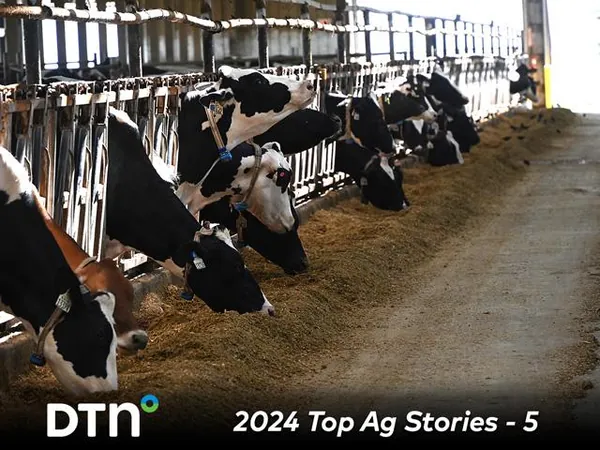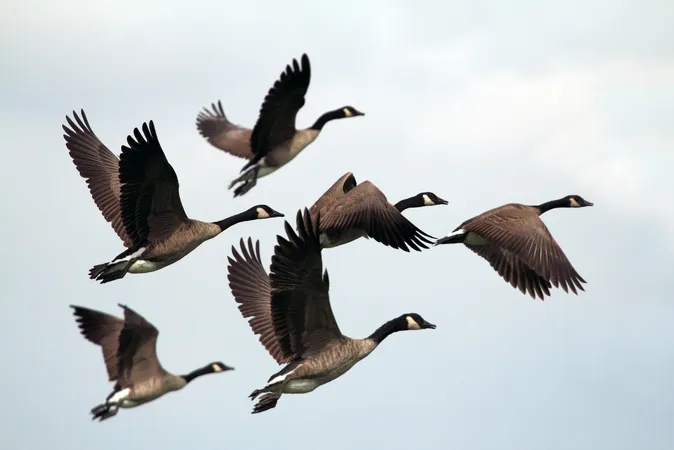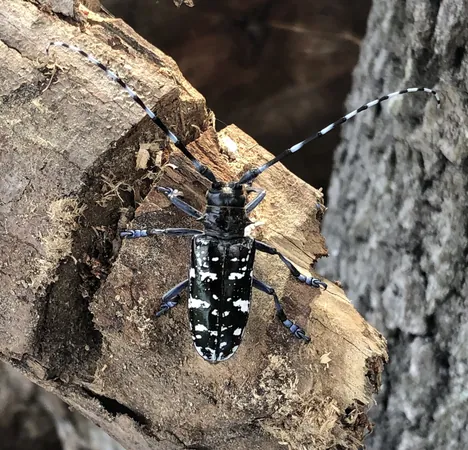
Unprecedented H5N1 Outbreak in Dairy Cattle: What You Need to Know!
2024-12-30
Author: Jacob
Unprecedented H5N1 Outbreak in Dairy Cattle: What You Need to Know!
In an alarming turn of events, the H5N1 strain of the avian influenza virus has been detected in dairy cattle for the first time in history. This unprecedented development has raised significant concerns about the impact on the dairy industry, particularly regarding milk production and animal health.
The outbreak began in March when veterinarians noticed a mysterious illness affecting dairy cows, leading to decreased milk yields and symptoms resembling mastitis. Extensive testing ultimately identified the pathogen as H5N1, typically associated with poultry. The transmission pathway from birds to cows remains uncertain, but experts believe it may have originated from dairy breeding stock farms that harbored the virus.
In particular, a herd in Texas has come under scrutiny for possibly contributing to the spread, though investigations continue. The Texas Animal Health Commission is working closely with various federal and state agencies to monitor the situation and implement effective containment strategies.
While H5N1 is known to be fatal to birds, its effects on dairy cattle appear to manifest differently. Affected cows exhibit a decline in milk production, loss of appetite, and altered manure consistency. Fortunately, the mortality rate remains relatively low, with culling rates at around 2%, except for some regions like California that have reported more severe impacts.
To prevent further transmission, testing protocols were established for lactating dairy cows participating in fairs and exhibitions. This precautionary measure has led to a marked decrease in the number of dairy cows showcased at summer events.
Despite these challenges, Jamie Jonker, Chief Science Officer for the National Milk Producers Federation, reassured consumers that the milk supply remains safe. Pasteurization processes effectively eliminate harmful pathogens, including H5N1, before milk reaches the market. Furthermore, all dairy meat is subject to stringent federal inspections, ensuring that only safe products enter the food supply.
Efforts to monitor and control the virus's spread include extensive testing in milk intended for pasteurization. This initiative, part of the National Milk Testing Strategy, aims to establish the H5N1 status across various states. Experts like Patrick Gorden from Iowa State University emphasize the importance of on-farm biosecurity measures to mitigate risks.
Perhaps more concerning are the human cases linked to this outbreak, primarily among farmworkers who have had contact with infected dairy cattle. Since April, there have been a total of 61 reported human cases, prompting the CDC to recommend enhanced protective measures for farm personnel, including the flu vaccine to prevent concurrent infections.
As of late December 2023, there have been 880 confirmed H5N1 cases in dairy cows across 16 states. The avian flu has also resurfaced among poultry, with over 14 million birds affected as migratory wild birds spread the virus.
This outbreak serves as a stark reminder of the interconnectedness of animal health and public safety. Farmers, consumers, and health officials alike must stay vigilant in this evolving situation. As we move forward, one thing is clear: the dairy industry is facing challenges that require coordinated responses and robust biosecurity measures.
Stay tuned for updates as this story develops; it could change everything about how we understand animal viruses and their implications for food safety.









 Brasil (PT)
Brasil (PT)
 Canada (EN)
Canada (EN)
 Chile (ES)
Chile (ES)
 Česko (CS)
Česko (CS)
 대한민국 (KO)
대한민국 (KO)
 España (ES)
España (ES)
 France (FR)
France (FR)
 Hong Kong (EN)
Hong Kong (EN)
 Italia (IT)
Italia (IT)
 日本 (JA)
日本 (JA)
 Magyarország (HU)
Magyarország (HU)
 Norge (NO)
Norge (NO)
 Polska (PL)
Polska (PL)
 Schweiz (DE)
Schweiz (DE)
 Singapore (EN)
Singapore (EN)
 Sverige (SV)
Sverige (SV)
 Suomi (FI)
Suomi (FI)
 Türkiye (TR)
Türkiye (TR)
 الإمارات العربية المتحدة (AR)
الإمارات العربية المتحدة (AR)